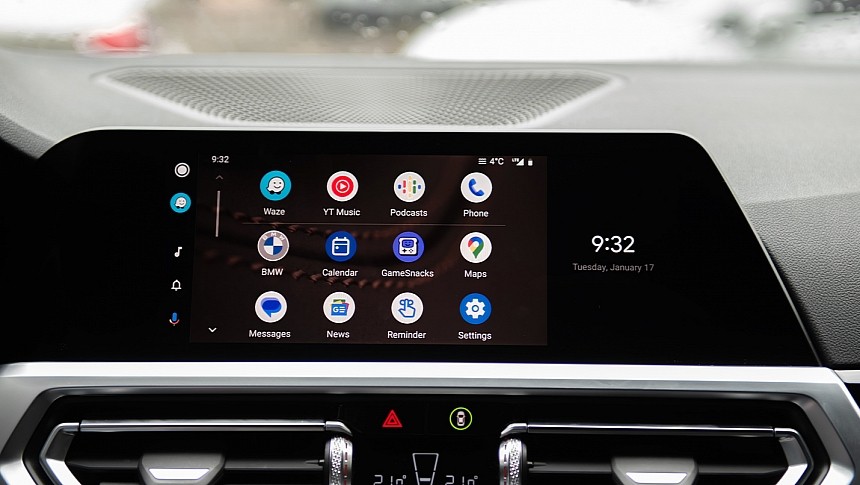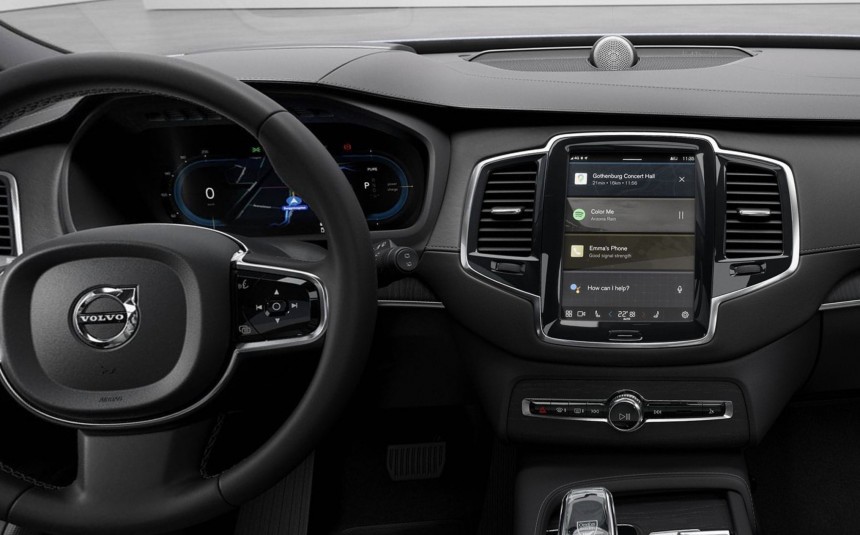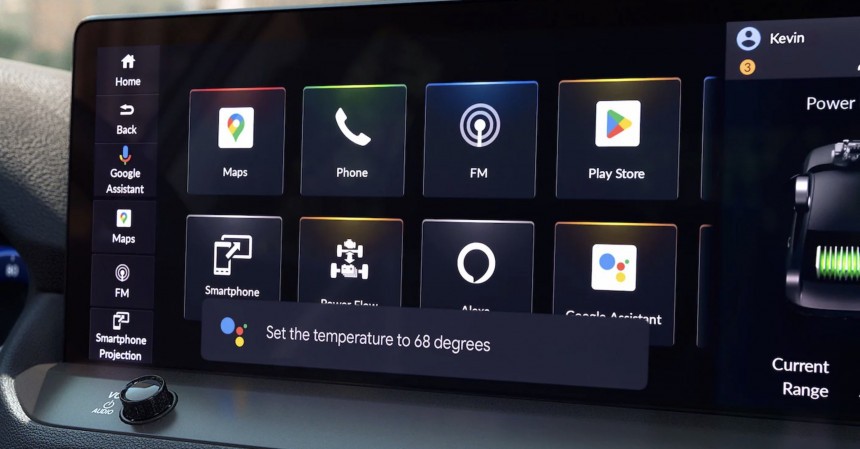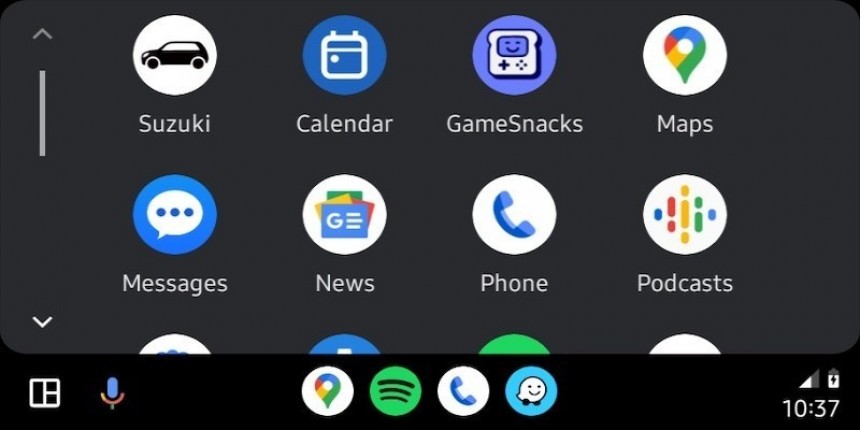Android Auto and Android Automotive spearhead Google's automotive strategy, placing the search giant at the forefront of the infotainment experience in new-generation vehicles.
Both platforms allow users to run apps in their cars, though they use different approaches, each with its own set of benefits.
The nomenclature could easily cause confusion in the Google user base, especially as they have the same purpose.
Before anything else, let me explain the main differences between the two.
Android Auto is an extension to the mobile device, mirroring the experience to the screen in the cabin. It requires a smartphone to run, so the apps still run at the mobile device level while the interface is projected to the infotainment display.
Android Automotive is a replacement for the mobile device, as it is the operating system powering the infotainment capabilities. It runs at the hardware level in the vehicle and does not require a mobile device to operate. Compared to Android Auto, it benefits from deeper integration into the vehicle, reading more data, including the battery range.
The experience with Android Auto and Android Automotive is completely centered around the available apps. Google slowly unlocks new app categories on both platforms, eventually bringing new capabilities to drivers.
Navigation and media apps are the most popular choices on both platforms. Google Maps and Waze dominate the navigation space, but companies like Sygic have already brought their software to the two platforms to provide users with worthy alternatives.
Spotify and YouTube Music dominate the music streaming space, though users can also choose from a wide variety of competing services, including Tidal.
Navigation and media app categories are available on both Android Auto and Android Automotive.
Next in line is the messaging experience. Officially, only Android Auto supports messaging app integration, with users receiving notifications for the messages they get on the likes of Google Chat, Facebook Messenger, Microsoft Teams, and so on. The platform doesn't offer a dedicated interface to read messages and send replies, but such capabilities are available via Google Assistant. The assistant can read the messages for you and then compose answers sent to the contact hands-free.
Android Automotive does not support messaging apps. Despite being advertised as a fully featured operating system, the lack of messaging apps is a major drawback, especially because Google could use a similar approach as Android Auto. Google Assistant could be in charge of reading incoming messages and sending replies.
However, I believe Google is aiming for a more advanced experience and probably wants to unlock messaging apps with a dedicated interface for each app in the future. Drivers could be allowed to read messages directly on the head unit when the vehicle is parked and also reply with an on-screen keyboard.
Android Auto and Android Automotive also support Point of Interest and Internet of Things apps. The latter brought great new apps to Android Auto, including OBD2 scanners to read information from a connected adapter and garage door openers.
This is the point where Android Automotive becomes the better option.
Video apps are only supported on Android Automotive, as Google does not allow them on Android Auto. Users can watch videos when the vehicle is parked, and you can imagine how great this option is when waiting to charge the car's battery.
Google could use a similar approach for Android Auto, allowing users to watch their favorite shows when the vehicle is not in motion. I'm certain developers like Netflix would rush to take advantage of the integration, but Android Automotive will remain their only option unless Google unlocks the video app category.
Android Automotive also exclusively supports browsers. Vivaldi is currently the only browser supported on Android Automotive, allowing users to load websites as they do on a computer. Browsers are also allowed only when the vehicle is parked, as looking at the screen and navigating the web is a big no-no while driving.
Last but not least, Android Automotive also supports games. It doesn't mean Android Auto users can't play games. They do, as Android Auto already comes pre-loaded with a collection of games, but further titles are not allowed. Android Automotive does support games, so interested developers can bring their titles to the platform if they comply with the guidelines. Of course, you shouldn't expect anything complex like Call of Duty to make its way to Android Automotive, though the power of cloud gaming could eventually land on the platform to unlock more exciting capabilities.
Eventually, the extra categories supported on Android Automotive prove that Google wants to make its operating system the superstar of its car strategy. It makes sense, especially as Android Automotive provides the company with access to more data – and we all know how important data has become for Google. Android Automotive will likely continue to evolve, and I expect new app categories to be unlocked on the platform in 2024.
The nomenclature could easily cause confusion in the Google user base, especially as they have the same purpose.
Before anything else, let me explain the main differences between the two.
Android Auto is an extension to the mobile device, mirroring the experience to the screen in the cabin. It requires a smartphone to run, so the apps still run at the mobile device level while the interface is projected to the infotainment display.
Android Automotive is a replacement for the mobile device, as it is the operating system powering the infotainment capabilities. It runs at the hardware level in the vehicle and does not require a mobile device to operate. Compared to Android Auto, it benefits from deeper integration into the vehicle, reading more data, including the battery range.
The supported app categories
Navigation and media apps are the most popular choices on both platforms. Google Maps and Waze dominate the navigation space, but companies like Sygic have already brought their software to the two platforms to provide users with worthy alternatives.
Spotify and YouTube Music dominate the music streaming space, though users can also choose from a wide variety of competing services, including Tidal.
Navigation and media app categories are available on both Android Auto and Android Automotive.
Next in line is the messaging experience. Officially, only Android Auto supports messaging app integration, with users receiving notifications for the messages they get on the likes of Google Chat, Facebook Messenger, Microsoft Teams, and so on. The platform doesn't offer a dedicated interface to read messages and send replies, but such capabilities are available via Google Assistant. The assistant can read the messages for you and then compose answers sent to the contact hands-free.
However, I believe Google is aiming for a more advanced experience and probably wants to unlock messaging apps with a dedicated interface for each app in the future. Drivers could be allowed to read messages directly on the head unit when the vehicle is parked and also reply with an on-screen keyboard.
Android Auto and Android Automotive also support Point of Interest and Internet of Things apps. The latter brought great new apps to Android Auto, including OBD2 scanners to read information from a connected adapter and garage door openers.
This is the point where Android Automotive becomes the better option.
Video apps are only supported on Android Automotive, as Google does not allow them on Android Auto. Users can watch videos when the vehicle is parked, and you can imagine how great this option is when waiting to charge the car's battery.
Android Automotive also exclusively supports browsers. Vivaldi is currently the only browser supported on Android Automotive, allowing users to load websites as they do on a computer. Browsers are also allowed only when the vehicle is parked, as looking at the screen and navigating the web is a big no-no while driving.
Last but not least, Android Automotive also supports games. It doesn't mean Android Auto users can't play games. They do, as Android Auto already comes pre-loaded with a collection of games, but further titles are not allowed. Android Automotive does support games, so interested developers can bring their titles to the platform if they comply with the guidelines. Of course, you shouldn't expect anything complex like Call of Duty to make its way to Android Automotive, though the power of cloud gaming could eventually land on the platform to unlock more exciting capabilities.
Eventually, the extra categories supported on Android Automotive prove that Google wants to make its operating system the superstar of its car strategy. It makes sense, especially as Android Automotive provides the company with access to more data – and we all know how important data has become for Google. Android Automotive will likely continue to evolve, and I expect new app categories to be unlocked on the platform in 2024.



















